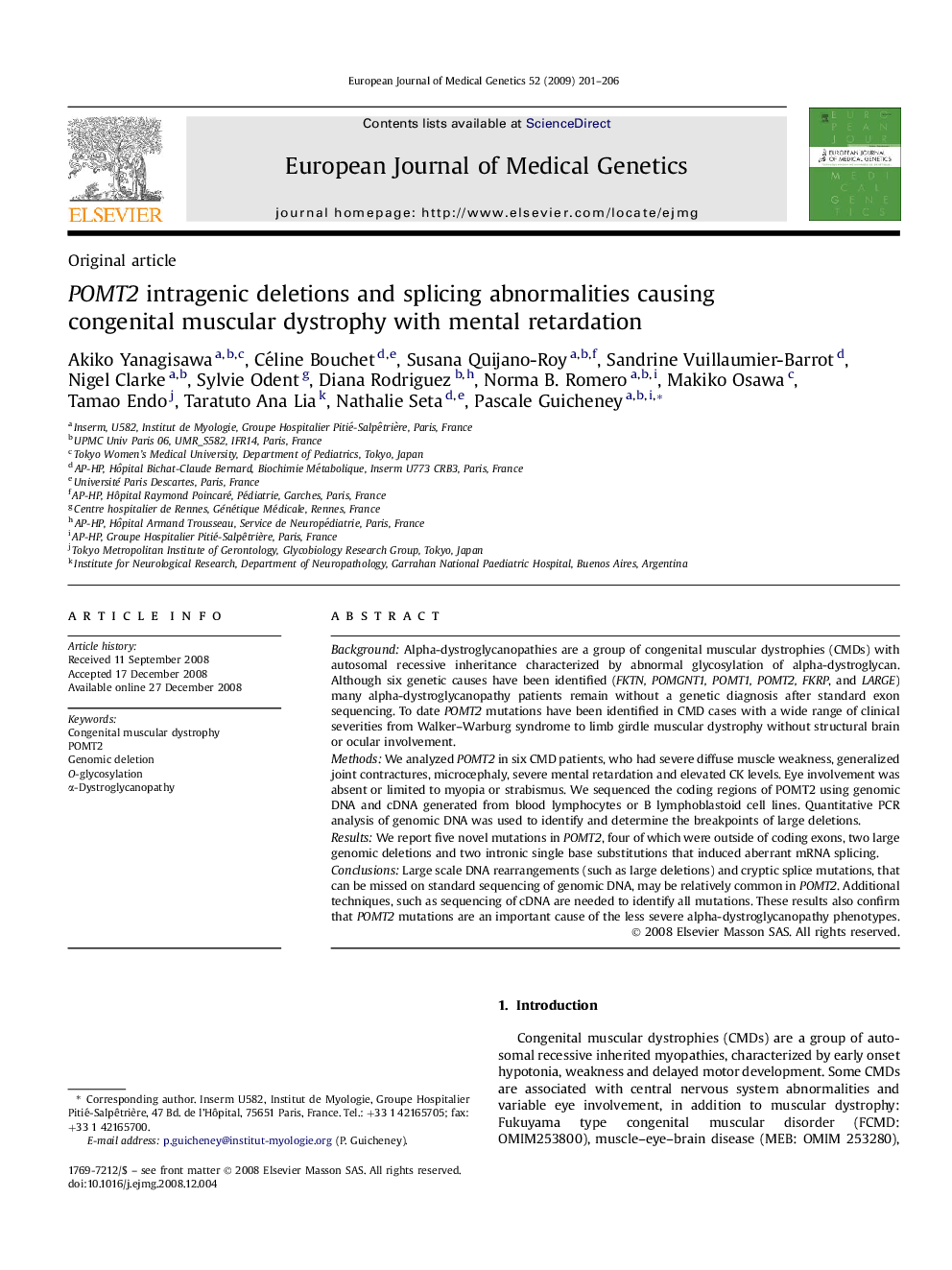| Article ID | Journal | Published Year | Pages | File Type |
|---|---|---|---|---|
| 2814432 | European Journal of Medical Genetics | 2009 | 6 Pages |
BackgroundAlpha-dystroglycanopathies are a group of congenital muscular dystrophies (CMDs) with autosomal recessive inheritance characterized by abnormal glycosylation of alpha-dystroglycan. Although six genetic causes have been identified (FKTN, POMGNT1, POMT1, POMT2, FKRP, and LARGE) many alpha-dystroglycanopathy patients remain without a genetic diagnosis after standard exon sequencing. To date POMT2 mutations have been identified in CMD cases with a wide range of clinical severities from Walker–Warburg syndrome to limb girdle muscular dystrophy without structural brain or ocular involvement.MethodsWe analyzed POMT2 in six CMD patients, who had severe diffuse muscle weakness, generalized joint contractures, microcephaly, severe mental retardation and elevated CK levels. Eye involvement was absent or limited to myopia or strabismus. We sequenced the coding regions of POMT2 using genomic DNA and cDNA generated from blood lymphocytes or B lymphoblastoid cell lines. Quantitative PCR analysis of genomic DNA was used to identify and determine the breakpoints of large deletions.ResultsWe report five novel mutations in POMT2, four of which were outside of coding exons, two large genomic deletions and two intronic single base substitutions that induced aberrant mRNA splicing.ConclusionsLarge scale DNA rearrangements (such as large deletions) and cryptic splice mutations, that can be missed on standard sequencing of genomic DNA, may be relatively common in POMT2. Additional techniques, such as sequencing of cDNA are needed to identify all mutations. These results also confirm that POMT2 mutations are an important cause of the less severe alpha-dystroglycanopathy phenotypes.
